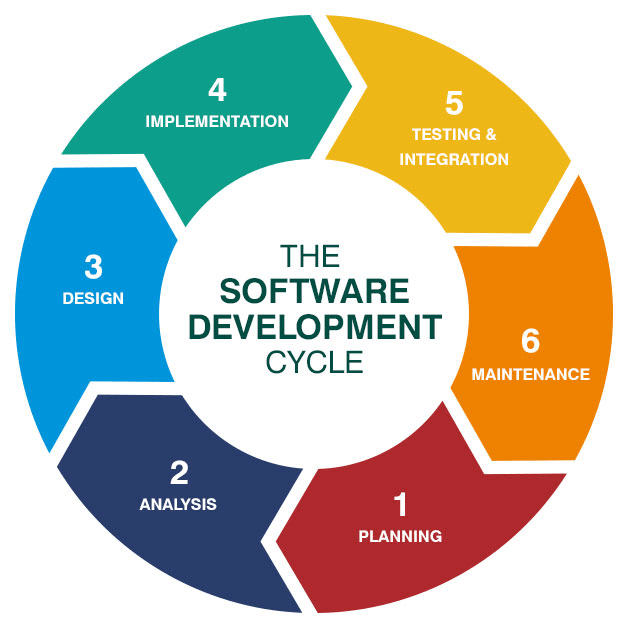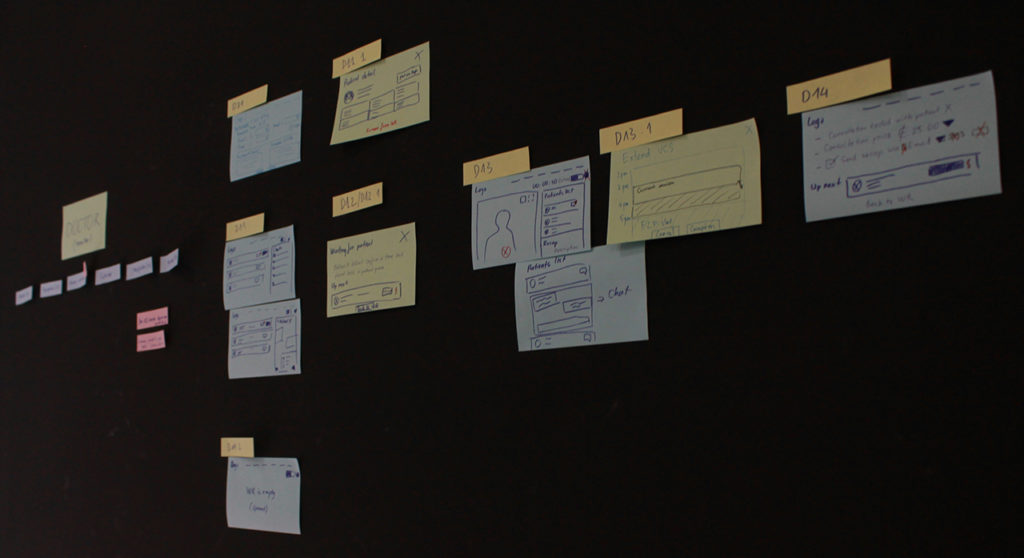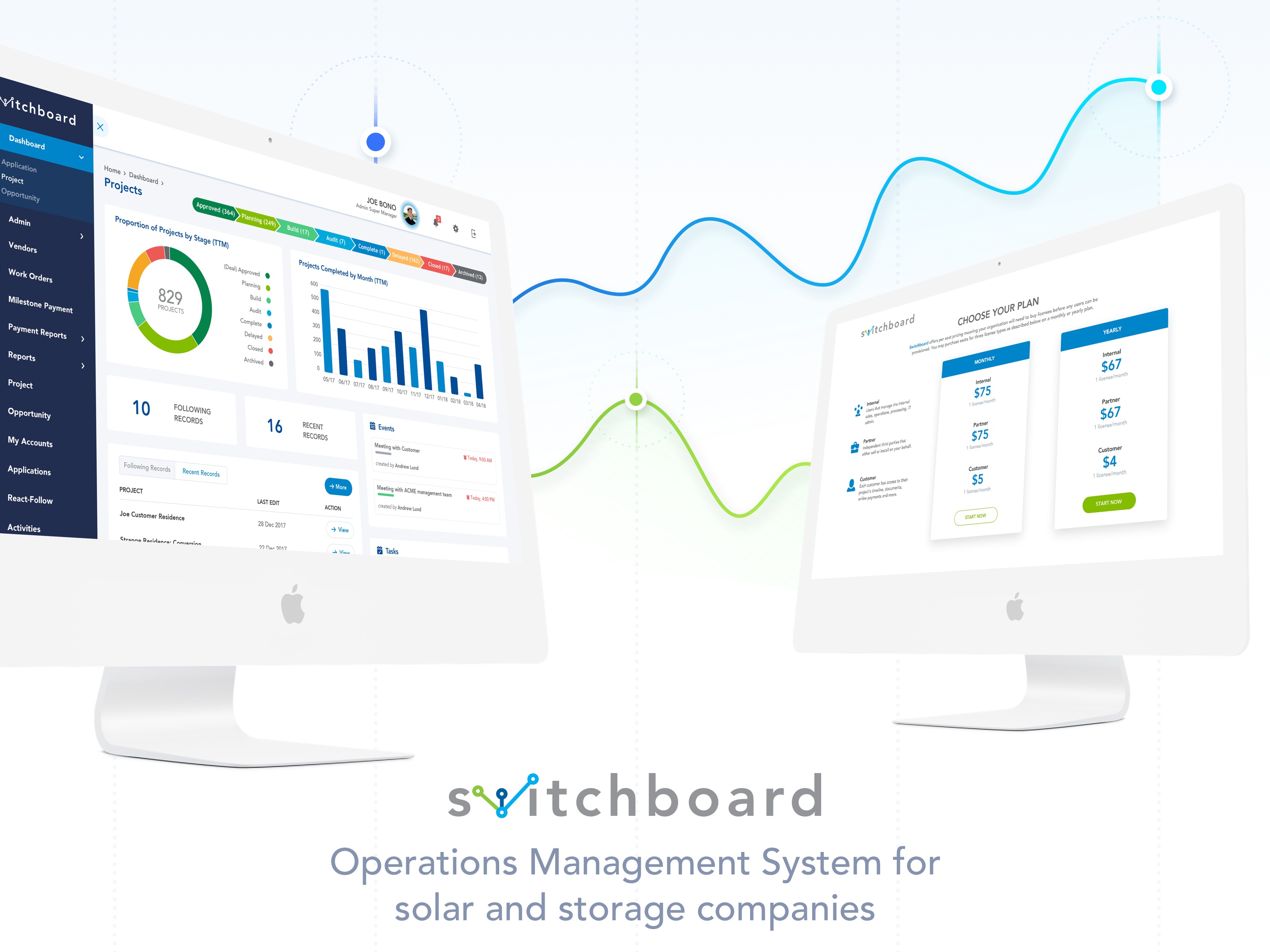Do you want to develop a product of top quality at the lowest cost in the shortest time? But how to produce one that can resolve your business problems and meet the requirements of the end users at the same time? For that purpose, you should familiarise yourself with the concept of software development life cycle or SDLC.
We can break the concept down into six parts, and walk you through each part with examples and real-life applications that will be beneficial to your intention of enhancing your business’s software system as well as when you can seek professional assistance from Designveloper and what specific assistance you might need.
Understanding Software Development Life Cycle (SDLC)
The software development life cycle is a closed cycle consisting of a series of six stages, ranging from planning, analyzing, designing, implementing, testing and integrating, and maintenance. Any successful websites or applications were primarily based on this process.
What is the Software Development Life Cycle or SDLC?
The Software Development Life Cycle, often abbreviated as SDLC, is a fundamental process that guides the creation of software applications. It’s essential to understand this cycle to grasp how software development works.
SDLC is a structured approach used by software developers to plan, design, build, test, deploy, and maintain software systems. This process ensures that software is developed systematically and efficiently.
The SDLC consists of several distinct phases, each with its own set of tasks and objectives. These phases typically include:
- Planning: In this initial phase, the project’s scope, requirements, and objectives are defined. This is where the software development team outlines what the software should accomplish.
- Analysis: During this phase, the team gathers detailed information about the project’s requirements, such as user needs, system functionality, and constraints. This analysis serves as the foundation for the subsequent stages.
- Design: In the design phase, the software’s architecture and technical specifications are created. This step outlines how the software will meet the requirements identified in the previous phases.
- Development: Here, the actual coding of the software takes place. Developers write the source code based on the design specifications. It’s the hands-on creation of the software.
- Testing: In the testing phase, the software is thoroughly examined to identify and fix any issues or bugs. This step ensures that the software functions correctly and meets the user’s needs.
- Deployment: After successful testing, the software is deployed or released to users. It’s made available for use in the intended environment.
- Maintenance: Once the software is in use, the maintenance phase begins. This involves ongoing support, updates, and enhancements to address changing user requirements and address any issues that may arise.
The SDLC is a continuous and iterative process. It allows for flexibility and adaptation throughout the development journey. This structured approach ensures that software is developed with quality, efficiency, and customer satisfaction in mind.
Understanding the Software Development Life Cycle is crucial for anyone involved in software development. It provides a roadmap for creating reliable and effective software solutions that meet user needs and stand the test of time.
Its importance in software development
Software development is of paramount importance in today’s world. With a staggering $783 billion spent on enterprise software in 2022 and a projected growth rate of 7.1%, it underscores the massive scale of software development. The Software Development Life Cycle (SDLC) is at the core of this process.
As the number of software developers worldwide is set to reach 27.7 million in 2023 and 28.7 million in 2024, it becomes clear that SDLC is the guiding framework for these developers. Each one relies on it to create top-notch software.
The SDLC holds immense significance because it ensures that the right people are involved in the right activities at the right times. This structured approach is a key to project success. It offers a robust framework for developing software applications, facilitating effective pre-development planning, reducing unnecessary costs, and enabling the creation of high-quality software products.
Moreover, it serves as a crucial basis for evaluating the effectiveness of the software. In a world where software is integral to almost every aspect of life, understanding the SDLC is not just a choice; it’s a necessity. It’s the cornerstone upon which reliable, efficient, and user-friendly software solutions are built, making it an essential component of modern software development.
The 6 Stages of Software Development Life Cycle

Stage 1: Planning
Prior to any project of software development life cycle, there comes strategy setting and planning. A business must be aware of its overall goal and the original idea that the whole plan will be based on later on.
1. Come up with an idea
In order to come up with a great idea, you – a business owner – must acknowledge current problems that your business has been encountering.
After all, ideas are to wipe out current hurdles.
It is highly recommended you start gathering an adequate amount of input – data from the markets you planted your business presence in, statistics from new markets that you find potential and promising for your future business endeavors. Feedback from customers and partners who you have cooperated with regarding campaign operations and product development as well as advice from professional coders, developers, and designers who acquired significant experience in your industry.
You can apply the SWOT model – strengths, weaknesses and opportunities, and threats – to your current choice of software development life cycle for identifying what needs to be done about your system.
2. Define your goal with SDLC
“What do I want for my business?” is what you should ask yourself at every single decision related to software development. Does its cost reduction, and have smoother operation management, clearer progress tracking, steady network connection, or a more user-friendly interface that you wish to implement in the new system?
Each mini goal requires a series of logically set tasks and competent human resources. However, in reality, every plan can sidetrack and backfire at your anytime. As a result, you as a strategy creator, need to set a backup plan or plan B for every substantial decision of your development scheme.
A software development company can help you with consultancy, offering practical yet feasible IT solutions and also planning for your new desired software system thanks to data analytics and information exchanges from you and your team members who will work closely with the new system after the execution is wrapped up.
Stage 2: Analysis
The analyzing stage could be of tremendous significance in SDLC. The professionals at Designveloper would often call this stage “the make or break” due to its importance.
1. Sketching
The first step of every analysis is to create a sketch of the new system. This is where professional work comes into effect as frequently designers and developers tend to start from scratch with the client’s vague idea about what they want to have for their new system.
A generic idea is perfectly fine as long as business owners and designers work closely together, and consistently ask questions that are vital to completing the final sketch of the software system.
People at Designveloper highly suggest you as a business owner seek out professional assistance as soon as possible. Preferably in the early stage of your software development project since you are very likely to spend an unnecessarily inundating amount of time researching and looking into information that is irrelevant to your project.
2. Layout the flow and features

After brainstorming and bouncing off new ideas with each other, the business analyst (BA) can layout the primary flow and new features that fit the initial requests and requirements for the new software proposed by business owners.
This should match the business owner’s initial goal – cutting down the budget, minimizing steps to check-out (for retail business and virtual stores), or polishing a more customer-friendly interface that will leave a more positive impression on users.
Particularly, in this part, many software development companies will offer professional assistance in business analysis and preparing detailed product documents that will later be filed for approval.
This small step is one of the most important hinges of the whole project since it gives your team members more time to adapt to the software mark-up and a better sense of familiarity with the new system.
What is MVP?
Once you and your team members are introduced to the sketch of the new software system. You should do MVP – minimum viable product. MVP is a technique in the software development life cycle. A new product or website is developed with sufficient features to satisfy early adopters.
All the known requirements from your initial demand would come into life. In this stage since you will be familiarised yourself with what they look like from the perspective of a customer.
Stage 3: Software Design
1. System design
Prior to the design stage, you will need to create a customized catalog of prototypes. And walk through the wide range of choices in order for you to fully understand the complexities. The concept behind each prototype and possible costs of developing. For maintaining a system based on each prototype.
Thanks to this minor step of stage 3. Many business owners can gain a better awareness of the project’s plausibility. And in turn, map out a blueprint of specific further steps that are needed to actualize the goal of your project.
2. UX design — designing the user experience for your app or website
The design stage would take the road map you and the professionals have crafted in the first two steps into UX design. Designing your new software system from the perspective of users.
This will include the three most basic parts. These are information architecture, and wire-framing of your website or your application. And set up a clickable prototype. Constant feedback from the business owners and designers’ timely adjustments to your initial idea. New software is really useful to the progress of the project.
3. User interface (UI) design
User interface (UI) design should not only capture potential users’ attention but also function well in all circumstances with a customer-centric mindset.

The aesthetics of your website or application depends solely on this stage. We tend to offer advice in style guide creation, rendered design creation and rendered click-through design creation based on our past experience and project in UI.
Broad research into customer interest, marketing trends, trends in visual entertainment, MVP, UI, and UX Design is included in Designveloper’s service offered to your software development project in order to generate the optimal choice of design for your product.
Stage 4: Implementation
Another break or make stage of the project lies in how your application would eventually make users feel. How much effort developers put users in their minds while developing the front-end would be generously displayed in the comparison of Wechat and Telegram.
Smoother transitioning between taps, heavy encryption. And a larger variety of customers. Friendly features make clear in the UK-based instant messaging application. Therefore, Telegram might prefer as the Chinese texting application fellow.
Once those two segments can finalize. The implementation and integration of the new system will conduct. Business owners can outsource a software development company to different services. Such as full-stack development, and the information exchanged with your internal technical team.
Stage 5: Testing and integration
In any SDLP, the testing round plays a crucial role in enhancing the quality, and reliability. And the performance of the new system as well as live-testing the desired features of the new software from the perspective of an actual user. Defects and malfunctions are better found in this stage rather than after the new system has been launched and put into effect.
The stage of testing includes functional testing. Including performance testing, edge-case testing, and device-specific testing. The mobile-device testing can recently be heavily invested with SDLC. Due to the distinctive characteristics of the three most used operating systems. These are Android, iOS, and Windows.
Lots of companies encountered massive negative feedback from users. Over the early days of a new application simply. Because Android users can gain certain benefits from the promotional program. It can offer with the new application but iOS users cannot attain it and vice versa.
Regarding the testing stage, product testing, reviewing, and fixing are generally offered by most software development companies.
Stage 6: Maintenance
If our car is broken, we have it fixed at a mechanical workshop. If our child catches a cold, we take them to see a doctor. For our peace of mind, we purchase insurance for our vehicles and our health.
The software system is a valuable asset to your business. So having a maintenance plan for your system is no different from buying insurance for your system’s overall health.
Timely proposals for updating new features to the system. Scaling and security measurements are among the most requested services. We have received from our past and current clients in terms of software maintenance and update.
We commit to offering well-rounded services. Bearing in mind the perspectives of our clients and their desired targeted customers. We can deliver feedback from professionals and continue seeking further enhancements for the sake of your product growth. The success of your product is our mission statement that was set to begin with.









